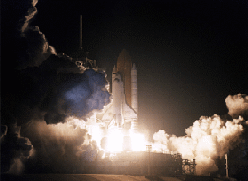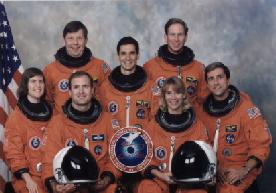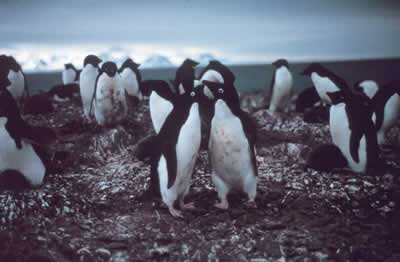Space Shuttle experience brought to classrooms
News story originally written on January 9, 1997
Scheduled for launch on January 12, the Space Shuttle Atlantis will be
carrying one uncommon payload...KidSat. KidSat is an education program
maintained by NASA's Jet Propulsion Laboratory, the University of
California at San Diego, and the John Hopkins University. A still camera
aboard the shuttle is used by middle school and high school students to
learn more about space, the duties of astronauts, and the Mission to
Planet Earth.
A group of high school students and undergraduates at the University of
California will operate KidSat's "Mission Control" which is modeled after
NASA's Johnson Space Center in Houston. These students will receive
telemetry from the shuttle and will send instructions to the camera to
photograph particular regions of the Earth.
This program allows students nationwide to learn more about our
planet
and NASA's shuttle operations. Interested school districts may
view the
information and images from KidSat via the following Internet
address:
http://www.jpl.nasa.gov/kidsat
You might also be interested in:

Astronauts Mark Lee and Steve Smith of the space shuttle Discovery completed their fifth and last spacewalk in the repair of the Hubble Space Telescope (HST). The spacewalk lasted 5 hours, 17 minutes.
...more
The Discovery Space Shuttle is scheduled to land at 1:48 am EST on Friday, February 21, at Kennedy Space Center (KSC) in Cape Canaveral, Florida. This will be only the fourth time that a nighttime landing
...more
At 2:01 PM on April 3, NASA plans to launch Space Shuttle Columbia into orbit from the Kennedy Space Center. The shuttle will stay in orbit for two weeks in which several experiments will be carried out.
...more
Scientists have recently discovered that thousands of Adelie Penguins thrive in patches of the chilly Southern Ocean near Antarctica's coastline. In these special areas of the ocean, called polynyas,
...more
Scientists have learned that Mount Hood, Oregon's tallest mountain, has erupted in the past due to the mixing of two different types of magma. "The data will help give us a better road map to what a future
...more
The Earth's mantle is a rocky, solid shell that is between the Earth's crust and the outer core, and makes up about 84 percent of the Earth's volume. The mantle is made up of many distinct portions or
...more
Some geologic faults that appear strong and stable, slip and slide like weak faults, causing earthquakes. Scientists have been looking at one of these faults in a new way to figure out why. In theory,
...more















